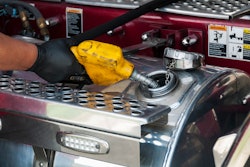The business winds of change produce an effect called weathervaning, where companies tend to pivot in the direction of the flow. It also can also be called herd mentality.
Competition sometimes inspires creativity, but more often it inspires replication. A company feels its competition has an edge, so they evaluate what their competitor is doing and assume it must be right because they seem to be succeeding, and then they duplicate it.
Business writers make a fortune from advocating for the new trend. Speakers make fortunes off paid public appearances at events and their publicists get them on all the trendy business media outlets. The industry eats this stuff up. CEOs read the books and give copies to all their managers to inspire them to jump on board the latest trend. The working staff go through repeated training classes. And like swimming in a rip tide, it’s best to go with the flow, right? Those that advocate different viewpoints slowly can be marginalized.
A few examples come to mind: ISO 9000 certification, Six Sigma, Total Quality Management (TQM) and offshoring.
Do you remember in the 1990s how American industry was all over offshoring? They relentlessly pursued cheap labor and manufacturing in foreign locations where their governments were eager for business growth and access to North American intellectual property. I worked with a number of companies that had moved their production facilities to these countries but kept some of their engineering and management stateside. Speaking a foreign language became a huge asset for some people moving up the management chain. Others had to quickly endure rapid language training classes.
In the pre-smartphone instant translator world, I purchased an English-Portuguese dictionary, which I still have as a reminder. Former associates learned Dutch, German, Swedish, Chinese, and more. Others had to learn British English going into former empire colonies like India. It was a boon time for language educators — new self-taught software tools started emerging like Rosetta Stone in 1993, and later Babbel in 2007 got a good hand up from industry. Berlitz put customized language programs in for companies such as in 1991 for McDonnell Douglas Helicopter Company, “which wanted the program to enhance its employees’ global competitiveness.”
What motivated this push to offshore? My theory is that it started with a shift toward a short-term focus away from the long term. We saw the rise of making quarterly earnings calls that exceeded expectations at the sacrifice of long-term capital investment.
While companies still touted that employees were their greatest assets, they were making moves to have those employees be lower cost ones in foreign countries. Minimizing expenses and the route to more profitability became more important than actually making better products and reinvesting in your own company assets.
Mergers and acquisitions became more common as companies seemed to compete at an Olympic level to achieve the lowest operating cost. Buying up a competitor bought you market share and theoretically allowed you to cut staffing further by eliminating redundancies. There were major mergers like Daimler and Chrysler in 1995, Ford buying Volvo in 2000 and BMW buying Rover in 1994. The business winds pointed the weathervane toward globalization.
Somehow it all made sense that making products overseas with cheaper labor and capital, then shipping it by ship or plane to the U.S., was more profitable than building it in the U.S. On a miles-traveled-per-product basis, the energy used in transporting materials and products grew substantially. As did their emissions, but that was not really on corporate radar in the '90s.
Built into this growing interconnected web of globalized companies was an assumption of normality, that governments don’t change, that natural disasters are manageable, that politics can be negotiated around, and that wars were brief and inconsequential. The underlying assumption was that the whole world was on the same mainline track with prioritizing,respecting and desiring profit making.
Fast forward to 2022
The globalized system put in place by those “visionary” business managers of the 1990s now is being slowly dismantled. The new business winds are blowing toward on-shoring and protectionism. Tariff wars and real wars are heating up. Long standing international ideological differences are taking precedence over the common pursuit of profit.
I expect a whole new raft of lecture tour people to emerge, new best-seller list business books to be read by CEOs and then sent on to their key business managers, and a whole new tranche of training programs to emerge. Purchasing groups at companies will be scrambling to find new sources to replace now politically and economically inconvenient ones. Companies will be reinvesting capital and labor in the U.S. industrial base, solidifying the U.S. economic system.
But inside those efforts will be the reality from the 1990s that investing in the U.S. tends to cost more. Labor can be more expensive. Complying with regulations can be more expensive. Profit targets will be harder to achieve. Automation will continue to be a path for many of this companies. Robotic manufacturing will continue to replace skilled labor. Skilled labor will continue to be marginalized as technology improves. Capital investment in robots tends to minimize operational expenses. The tradeoff between CAPEX and OPEX will favor minimizing OPEX, as it did in the 1990s.
Some business practices are hard to overcome. The greater reliance on automation may, like offshoring, prove to be a short-term strategic success with long-term ramifications. My Six Sigma training made me wonder how much of the money that had been spent setting up offshoring over the decades is now being spent to on-shore? How many executives made it to the top by cost cutting and outsourcing? Hopefully they’ve retired and left the field of business battle to new people not so vested in their dated policies.
The trucking industry is all over all these trends. Transporting goods is fundamental whether offshoring or on-shoring, but the modes and routes differ. Automation has been an on-going trend in OEM factories for two decades and will continue to accelerate. Automation of truck driving and warehouse operations has taken off.
The one constant in trucking is change. Hopefully the new visionaries at companies can see beyond the near-term profitability and spend some time thinking about the long-term viability of their decisions.












